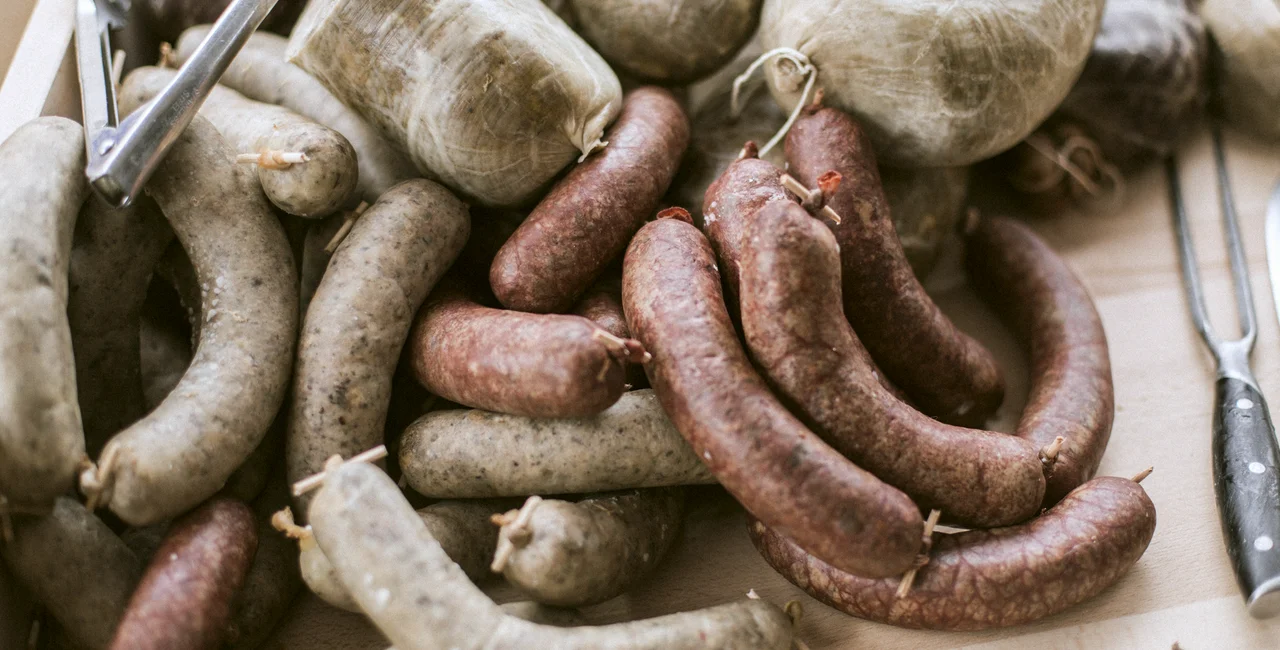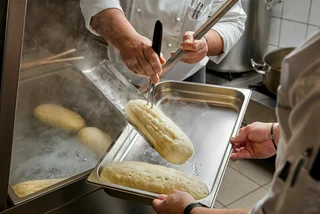This time of year sees the traditional Czech zabijačka, or pig-sticking taking place. The event's popularity has been revived in recent years, enjoyed by many for its social element amid the slow winter months, and as a means of paying homage to a firmly rooted food tradition. A typical pig slaughter starts early in the morning and all the parts of the animal are processed gradually as food and drink are partaken of throughout the day.
Historically, pig slaughter was the domain of villages, where whole families and neighbors gathered to help. Pig sticking took place during the colder seasons, beginning in January and leading up to masopust, the Czech Mardi Gras celebration, with the intention of preserving the meat longer.
The number of delicacies produced during a typical zabijačka is so great that even Czechs have a difficult time keeping them straight. This brief guide, courtesy of Ambiente butchers, will help clarify the classics so you can try them for yourself.
Enjoy these traditional dishes through Feb. 18 at Lokále in Prague.
Ovar
Ovar, a dish made from rather fatty pork meat (head or knuckle), has both its supporters and detractors. It's made by boiling lesser-quality cuts of meat and offal such as the spleen, heart, liver, or kidneys in salted water with bay leaf, allspice, peppercorn, and onion. The broth makes a nice soup barley is added or for the zabijačka crowd, pork blood can go into the soup.
Prdelačka (blood soup)
Don't let the name, loosely translated as "butt soup" fool you. This is actually a blood, not a butt, soup made from a strong broth from various parts of offal and mixed with blood and barley. Pork blood is added to the broth, as well as a healthy amount of garlic and marjoram.
Zabijačkový guláš (goulash)
This seasonal take on the classic Czech goulash incorporates a number of cuts -- shoulder, belly, neck, trimmings -- and offal, rendering a flavor that is unique to the zabijačka season.
Jelito (blood sausage)
A pork sausage that's made from fattier meat ground together with offal, the blood of which binds the mixture. The filling is seasoned with ground carraway and pearl barley is added before it goes into the casing.
Prejt (filling)
This is the filling from jelito, baked in the oven in a casserole dish to give it a crispy crust. Prejt is best enjoyed warm, atop a slice of bread.
Jitrnice (white sausage)
Leaner meat goes into making this sausage, and no blood is added to the filling. The mixture (meat, lungs, spleen, raw liver) is mixed with bread rolls which absorb the fat and binds the whole mixture. Jitrnice tastes great cold or warm.
Brawn (tlačenka)
The parts of the pig that contain collagen are used here: skin, back fat, and pig's feet. This is what gives this delicacy its stiff jelly-like consistency. More meat is added to, mainly lean pieces. It is not boiled but heated in water with a maximum temperature of 85 °C. The brawn is then pressed and allowed to cool and rotated regularly so that the meat settles evenly.
Rypáček a ouško (snout and ear)
A treat for connoisseurs (and the truly brave)! The flavorful snout and ear, typically added to the prejt, are often literally fought over at the butcher's counter. If these goodies aren't added to the sausage, they can be used, for example, in the brawn.
Škvarky (cracklings)
Cracklings, often referred to as butcher's popcorn due to the fact that they are popped during the entire slaughter process, are created when the lard is rendered (back lard cubes melt and start to heat up). The cracklings are removed and the lard is poured off, which is spread on the bread after it has solidified.
In the Czech Kitchen is a weekly column written in cooperation with the culinary experts from Ambiente. Established in 1995, the Prague-based collective of pubs, restaurants, and fine-dining outlets have transformed the Czech culinary landscape and lent to the widespread awareness of quality food service and production in Czechia. Follow their socials or book your table at www.ambi.cz.












 Reading time: 3 minutes
Reading time: 3 minutes 



















